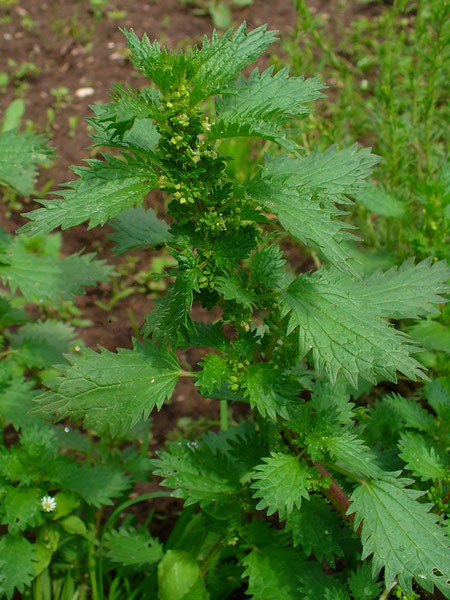Urtica urens
 Image: H. Zell
Image: H. Zell
Description
"Urtica urens is a herbaceous annual flowering plant species in the nettle family Urticaceae. It is native to Eurasia and it can be found globally as an introduced species. It is reputed to sting more strongly than the Common Nettle/Stinging Nettle. Each stinging hair on U. urens is a tapered, elongated cell, constricted just below the tip, with a bulbous base embedded in the multicellular pedestal. When hit, the tip breaks off and the hair becomes a miniature hypodermic needle that penetrates the skin and injects its irritating chemicals. The tip of the hair is high in silica, but the silica concentration decreases towards the base, where it is replaced by calcium (Thurston and Lersten, 1969). Each hair is 100 µm long and has 10 µg of fluid that contains histamine and acetylcholine." Depite the stinging irritant, the plant is used medicinally for rheumatoidism and as an aphrodisiac (supposedly by Zulu groups(Watt and Breyer-Brandwijk, 1932)), to make beer, high protein soup and tea."In Europe, Urtica urens is one of the food plants of the small tortoiseshell butterfly (Aglais urticae). In New Zealand it is also a food plant for the New Zealand red admiral butterfly (Bassaris gonerilla, syn. Vanessa gonerilla, syn. Papilio gonerilla), and the Australian/New Zealand yellow admiral butterfly (Vanessa itea). Pollen release in the Urtica genus is unique. Immature stamens are bent towards the centre of the flower. When the anthers mature, the stamens suddenly straighten, shooting pollen into the wind. Seeds are rich in oily endosperm and do not float on water (Holm et al., 1997)."
Propagation instructions - seeds
Emergence of new plants is encouraged by soil disturbance but soil disturbance depletes the seedbank to less than 10% after six years. Seedbanks can otherwise last from 20 to 100 years. After soil disturbance, follow up by weeding emerging plants and plant up the disturbed soil to precvent re-establishment. Remove only with gloves and arms covered to avoid the stinging skin irritant.
